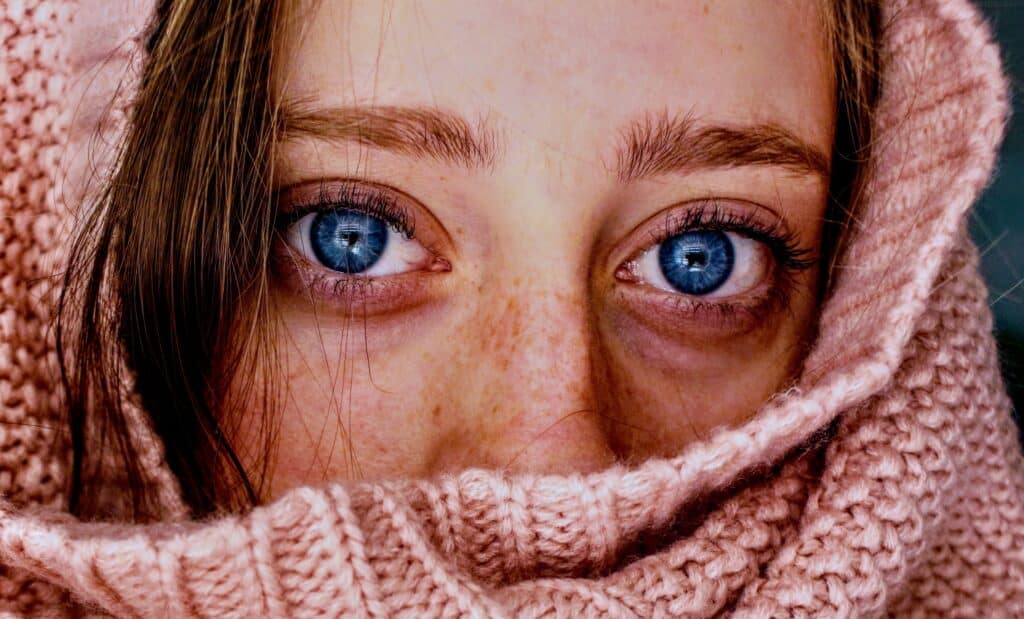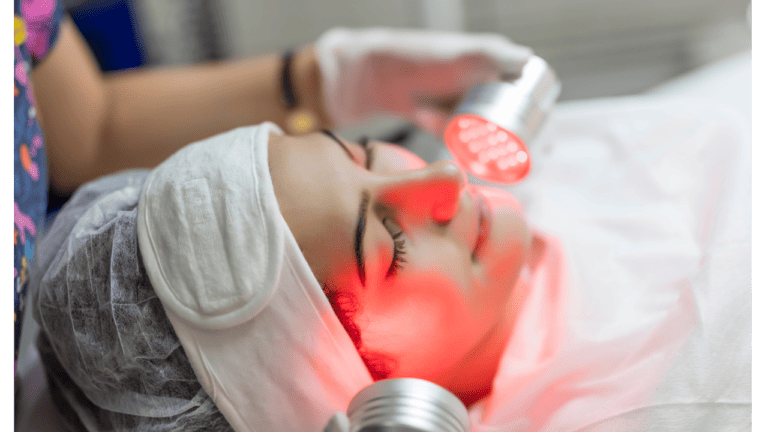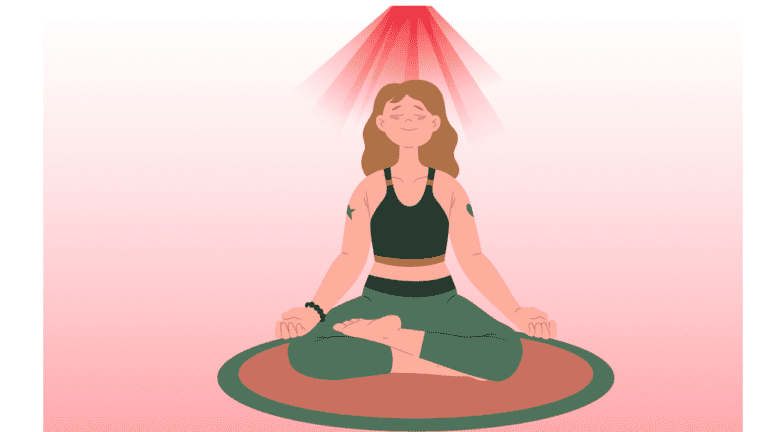Exploring the Need for Eye Protection in Red Light Therapy. Red Light Therapy is amazing and has gained much traction in skin and health treatments because of its remarkable benefits. However, a common question rising amongst users is the safety of these devices, particularly concerning eye protection.
You may have found that in some clinics, where it’s a professional setting for red light therapy, they make you wear black out goggles to protect your eyes, whilst in others they don’t do the same. Also, why do some at-home red light therapy devices not include this feature? Especially Red LED Face Masks.
Understanding this aspect is crucial, not just for effective treatment but also for ensuring safety during use. So let’s delve into the intricacies of red light therapy devices, examining why eye protection might not always be a part of their design. Safety is paramount, and being informed is your first line of defense. So, let’s unravel this mystery and discover what makes these devices safe, or when extra caution is warranted.
Key Takeaways
- Design and Safety Standards: The absence of eye protection in some red light therapy devices is often due to specific design considerations, user comfort, and adherence to regulatory standards.
- Balancing Risks and Benefits: While there are minimal risks to the eyes with proper use, understanding the intensity and usage guidelines of each device is crucial for safe application.
- Informed Consumer Choices: When choosing a red light therapy device, consider safety certifications, device specifications, and manufacturer guidelines to ensure both efficacy and safety.
Understanding the Varieties and Mechanisms of red light therapy
Red light therapy devices come in various forms, ranging from professional-grade equipment used in clinics to portable home-use gadgets.
Different Types of Devices: Broadly, these devices can be categorized into professional systems found in medical settings and consumer-grade models for personal use. Professional devices typically offer higher intensity treatments and are designed with more robust safety features. In contrast, home devices prioritize ease of use and comfort, often appearing as handheld units, masks, or panels.
How They Work: Regardless of their type, all red light therapy devices operate on a similar principle. They emit light at specific red and near-infrared wavelengths, generally between 630 to 700 nanometers, known for their therapeutic properties. This light penetrates the skin, stimulating cellular processes that lead to various health benefits.
The Science Behind Red Light and Eye Safety

Effects of Red Light on Eyes
While intense light sources can be harmful to the eyes, red light therapy devices emit light at wavelengths and intensities that are generally considered safe. However, the degree of safety can vary based on the device’s intensity and usage duration.
Distinguishing Harmful Light Sources
It’s important to differentiate between therapeutic red light and potentially harmful light sources like UV rays. Unlike UV light, which can cause eye damage, red light does not have the same harmful properties.
Scientific Research of red light therapy On Eyes
Research and expert opinions generally suggest that red light at therapeutic levels does not pose significant risks to the eyes. However, caution is advised, especially for those with pre-existing eye conditions or sensitivity.
There have not been many studies specifically about red light therapy on the eyes, however there was a study done that resulted in positive effects of Near Infrared (NIR) Light Therapy for eye diseases. NIR (810-850nm) penetrates deeper than red light (630-660nm) and it explored the possibility of NIR helping with optic nerve trauma and neuropathy, retinal injuries and macular degeneration.
For now, however while no benefits or side effects are proven or unproven, it is better to be safe and cautious and do not look directly into any red light therapy device when it is one and use eye protection when necessary.
Reasons for the Lack of Eye Protection in Some Devices
The absence of eye protection in certain red light therapy devices is definitely not an oversight but often a deliberate design decision and user considerations.
Design Considerations: For devices targeting specific skin areas, like handheld units or face masks, the design focuses on directing light to those areas while minimizing exposure to the eyes. Therefore, additional eye protection might be deemed unnecessary, however you can take extra caution and close your eyes while using them.
User Convenience and Comfort: Manufacturers also consider user comfort and ease of use. Devices without built-in eye protection are often designed to be less intimidating and more user-friendly, especially for at-home users. Since red light therapy requires one to use it for a period of time from 5 to 15 minutes, at-home users often prefer to watch tv or browse through their phones while using it.
Regulatory Standards and Guidelines: It’s worth noting that regulations surrounding these devices vary. In many cases, the standards do not mandate eye protection for certain types of red light therapy devices, especially those with lower intensity.
Risks vs. Benefits: Assessing the Need for Eye Protection

While red light therapy is generally safe, it’s crucial to evaluate the need for eye protection based on the device’s intensity and usage, in addition does the user personally have any issues with their eyes or if they have sensitive eyes by nature.
Potential Risks: Direct exposure to intense light can cause discomfort or temporary visual disturbances. Although rare, prolonged exposure to very intense light could pose risks, necessitating protective measures.
Weighing the Benefits: The therapeutic benefits of red light therapy, such as improved skin health and pain relief, are well-established. When used correctly, these devices provide significant benefits with minimal risk to the eyes.
Expert Recommendations on Using Red Light Therapy Safely
For safe and effective use while leveraging the benefits of red light therapy, it’s important to follow expert advice.
Professional Input: Health professionals typically recommend starting with lower-intensity devices, especially for new users, and gradually increasing intensity if needed.
Safe Usage Practices: If a device does not include eye protection, it’s often because the intensity is within a safe range. In addition, even if you decide to use red light devices that are close to your eyes, users should avoid staring directly into the light and also follow the manufacturer’s guidelines regarding distance and duration of us of the device.
Consultation for Specific Needs: For individuals with specific eye conditions or concerns, consulting a healthcare professional before using red light therapy is advisable.
Consumer Advice: What to Look for in Red Light Therapy Devices
- Check for Safety Certifications: Look for devices that have been tested and certified for safety. Certifications from recognized bodies can assure quality and safety standards.
- Understand the Device Specifications: Pay attention to the intensity and wavelength specifications. Devices intended for delicate areas, like around the eyes, should have appropriate safety features.
- Read User Reviews and Manufacturer Guidelines: User experiences and manufacturer instructions can provide valuable insights into the device’s safety and efficacy.
Emphasizing Safety in Red Light Therapy
In conclusion, while many red light therapy devices are designed with eye safety in mind, the need for additional protection varies. Understanding the design, usage, and safety standards of these devices helps users make informed choices for safe and effective treatment.
We encourage readers to prioritize safety while exploring the benefits of red light therapy. Always consult with healthcare professionals if you have concerns about eye safety or pre-existing conditions.
FAQs about eye protection for red light therapy
Is Eye Protection Necessary When Using Red Light Therapy Devices?
While red light therapy is generally considered safe for the eyes, the necessity of eye protection depends on the device’s intensity and usage. Lower-intensity devices, especially those designed for home use, typically pose minimal risk. However, for devices with higher intensity or for prolonged exposure, eye protection is recommended. Always follow the manufacturer’s guidelines for safe use.
Can Red Light Therapy Cause Damage to the Eyes?
The risk of eye damage from red light therapy is low, especially with devices designed for consumer use. Red light therapy devices emit light at wavelengths that are not harmful like UV rays. However, direct and prolonged exposure to intense red light could potentially cause discomfort or temporary visual disturbances. It’s advisable to consult with a healthcare professional if you have specific eye conditions or concerns.
What Should I Consider When Choosing a Red Light Therapy Device Regarding Eye Safety?
When selecting a red light therapy device, consider its intended use and the intensity of the light. Look for devices with safety certifications and read the manufacturer’s guidelines on eye safety. For devices used close to the eyes, such as facial masks, check if they have built-in eye protection features. Reading user reviews can also provide insights into the device’s safety and comfort during use.



![Ilso Nose Pack [Review] – Tried & Tested](https://itslisabelle.com/wp-content/uploads/2023/12/Screenshot-2023-12-22-at-7.04.26 PM-768x770.png)


